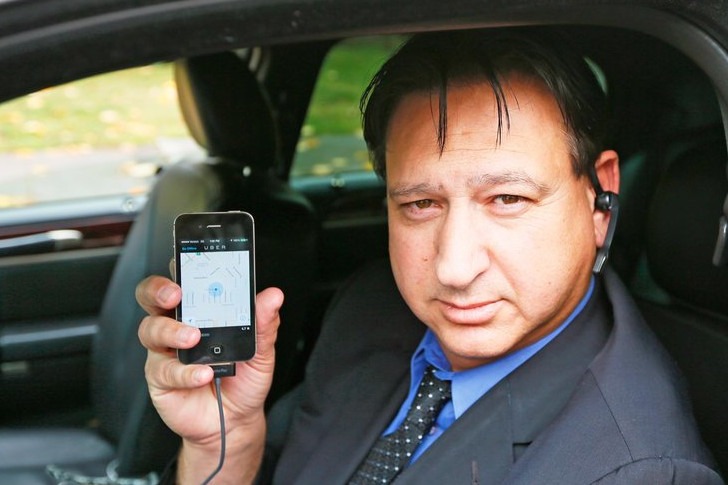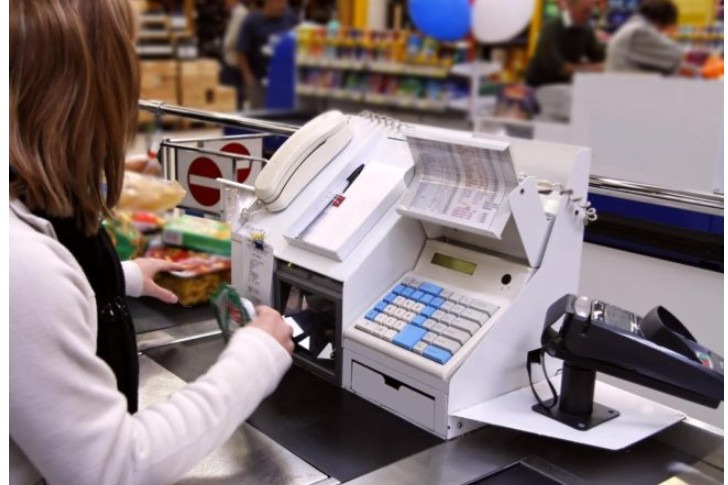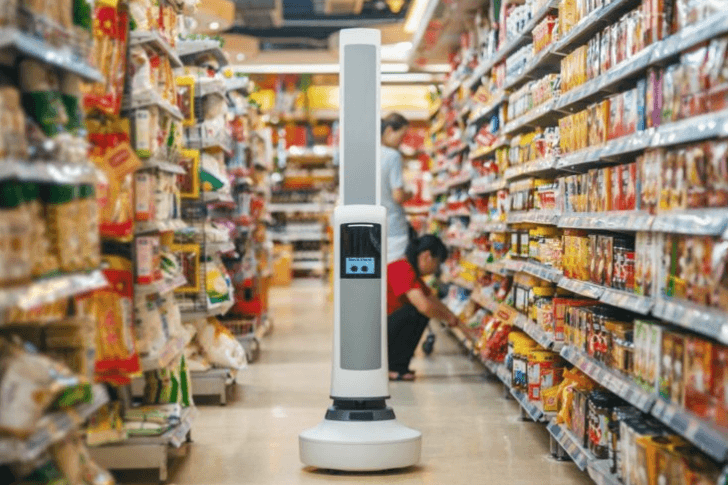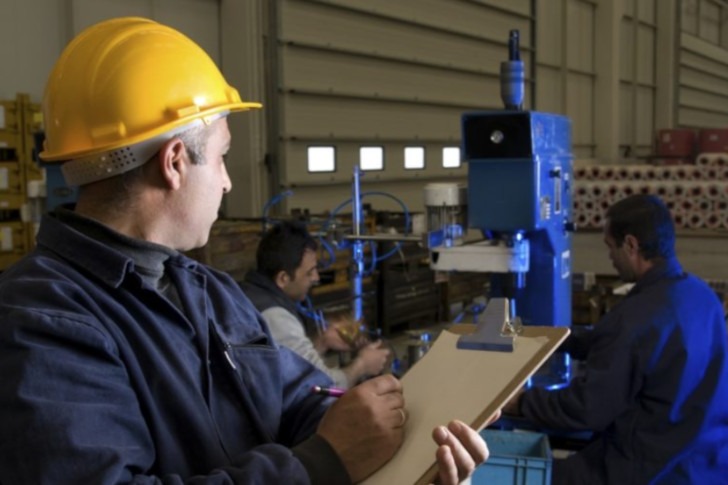Advertisements
For those who are comfortably enjoying their retirement, they’ll never have to face the problems among young people today. Many millennials are finishing school or enjoying the early years of their career with a burning question looming over their heads: how long before a machine takes my job?

Much has been said about the role of immigration and how it can be used as a scapegoat for changing workforces. The truth is a lot more frightening. Robots and artificial intelligence are more than likely to steal hard jobs from honest humans. Let’s take a look at how technology will affect some of them.
Librarians
Libraries are a place seldom enjoyed by young people today. While older generations can appreciate the display of books and their vast information, younger people are opting for internet access.
 Shutterstock / diignat
Shutterstock / diignatWhile unfiltered internet information poses its own problems of fake news, it’s undeniable that people are opting to quickly search their queries online. As visitation rates plummet, it won’t be long before libraries are seen as obsolete. Once they shut, the librarians will be out of a job and career.
Radiologists
Humans that spend hours a day scanning X-Rays and CT Scans are bound to make a few mistakes. Artificial intelligence has already proven to be more effective than humans when looking for abnormalities in the everyday scan.
 A and N photography/Shutterstock.com
A and N photography/Shutterstock.comMachines can more accurately spot problems – for a fraction of the cost. It won’t be long before radiologists are made redundant and people will put their trust in AI that can diagnose you in only a few seconds. Who would you trust more?
Uber Drivers
Imagine working at a company for several years for the sole purpose to help you get replaced by technology? Currently, there are more than two million Uber drivers, with plenty more on other ridesharing services like Lyft and Gett.
 Lucy Nicholson/Reuters
Lucy Nicholson/ReutersThe only problem? Their existence doesn’t fit in with the business model that these companies practice. Soon enough, they will want to replace their drivers with self-driving cars. These statistically cause fewer accidents and operate at a fraction of the cost. Say goodbye to your Uber driver…
Newspaper Printers
E-books and online publications have been enjoying an upward spike in popularity for the last 15 years. It’s hard to argue why: it’s environmentally better, quicker, easier, and cheaper. It appears that everyone benefits from quicker news except for those who print old newspapers.
 Pixabay.com
Pixabay.comThere’s been a consistent decline in recent years, with the industry expected to ‘adapt or die’. In a few years, no one will continue to buy hard copies of newspapers, forcing their printers to find new work.
News Broadcasters
There are a few reasons why the role of the news broadcaster is under threat. First, We no longer check in at certain times each day to get our daily news. Each year, more people are connected online and want their news instantly.
 metrosource.com
metrosource.comSecond, and perhaps more importantly, they might be entirely replaced with AI. In China, citizens are already receiving their news via AI-created anchors. This cuts costs and allows each person to hear tailored news stories at times that suit them.
Emergency Dispatchers
Once upon a time, dispatchers were an essential 3rd party that would connect a caller to the nearest and most appropriate emergency service. Today, with the advent of GPS and smartphones, there are plenty of ways to connect to the necessary services.
 Flickr.com
Flickr.comFor example, apps can automatically share your location with the nearest ambulance or police car, streamlining the service and saving lives faster. It won’t be long before dispatchers are sent home and swapped in for more advanced technology.
Travel Agents
Travel agents used to be the main go-to person when it came to booking a holiday. Before the internet, we had no idea where to go and how to book all the flights, hotels, and other factors associated with a holiday.
 Pixabay.com
Pixabay.comNow, entire vacations can be booked with the tap of a finger on your mobile phone. Technologies can optimize the perfect for you and your family at the best available costs. Send your travel agent packing home.
Assembly Line Workers
The assembly line was created in 1902 by Henry Ford to optimize performance and final products of the automotive industry. It is a format still used today: hire many people to perform the same small job to complete a final item or product in a fraction of the speed. In the 1900s, 99% of assembly jobs were carried out by humans.
 topgearup.com
topgearup.comAs robot capabilities improve each year, this number is shrinking. Soon, almost all these roles will be phased out and replaced by robots that can perform the job quicker, longer, and cheaper.
Telemarketer
Before social media exploded into our everyday lives, older readers might remember how telemarketers would spend hours a day cold calling people and trying to sell them products are services over the phone. It was awkward and random, without much success.
 thriftyfun.com
thriftyfun.comToday, marketers can achieve much higher levels of success via direct and tailored social media marketing. It’s non-intrusive, personal, and far easier to scale to potentially millions of customers. Companies won’t want to waste time and money paying humans when they can get higher success rates through apps.
Cashiers
Sponsored Links:
Many who assume that cashiers risk of losing their jobs because of machines only have half the story. It is true that over time, managers will want to save money by replacing human cashiers with cheaper and more efficient machines, but this is a solution and not a cause.
 Wisegeek.com
Wisegeek.comTime and time again, we have seen this be an outcome for companies who raise their minimum wage costs. It is only when companies are forced to pay people more money that they decide to remove the person entirely. Considering that retail is America’s biggest industry, that’s a lot of potential job losses.
Lumberjacks
Many people and companies are becoming more aware of the risks of climate change. Since many agree that the change in the Earth’s climate is caused by human behavior, we will want to work on reducing our footprints.
 alaskashoretours.com
alaskashoretours.comLumberjacks work all day cutting down trees to burn for heat or energy. Over time, this will be replaced with more energy-efficient methods. This is a simple question of supply and demand: once people want less wood, they’ll need fewer lumberjacks.
Bank Tellers
It appears that millennials do literally everything they can not to talk to other humans. This rings particularly true when it comes to the bank and other utilities. Since most bank transactions can be made over the internet or within an app, there is less need for physical visits to the bank each month.
 Getty Images/iStockphoto
Getty Images/iStockphotoSadly, the people who will lose out most through this innovation are the bank tellers who will idly wait for anyone to visit them. Eventually, their jobs will probably disappear.
Financial Analysts
This is another example of how AI and technology can out-perform a human. Financial analysts are expected to make quick decisions under intense pressure that might resolve in them losing millions of dollars.
 topgearup.com
topgearup.comWith AI, they don’t have ‘instinct’ but have a large amount of data to rely on when making decisions. There are already studies that demonstrate how AI more accurately tells people when to buy and sell their stock. Perhaps these analysts can predict their termination.
Inventory Managers
Supermarkets are usually full of inventory managers who walk around the store and refill stocks if any particular aisle is running low. Unfortunately, technology has advanced to a stage that makes this expensive and time-consuming for shopowners.
 topgearup.com
topgearup.comRobots can just as easily scan and restock shelves – without the need for a salary or bathroom breaks. Soon enough, we will start to see little robots quickly restocking the shelves in supermarkets. These folks might want to think about a new job…
Textile Workers
Similar to assembly line workers previously mentioned, folks who work as textile workers suffer from the same fate. Once upon a time, people worked for hours sewing and stitching the necessary fabrics together to make garments.
 topgearup.com
topgearup.comNow, machines can neatly and accurately sew all the pieces together without needing to stop for breaks. What’s more, machines don’t get tired and aren’t likely to make mistakes. Textile workers just may not have a job in 20 years. What do you think?
Sports Umpires and Referees
Rugby was the first sport to introduce a ‘camera referee’ – something the human ref could turn to when reviewing a move from a team player. Since those early days, more sports have adopted the use of a camera, such as soccer and tennis.
 Andy Todd – Wikipedia
Andy Todd – WikipediaThe use of a camera or sensor technology can help remove bias and draw an objective and accurate conclusion of player behavior. It makes sense that eventually, humans will no longer umpire or referee these games and decisions will be made entirely by computers.
Train Drivers
In the same way that most other driving roles will be replaced by self-driving technologies, train drivers also run the risk of job loss in the future. It appears that their jobs are easier to replace: trains operate on 1-dimensional tracks and don’t need to navigate 3-dimensional spaces like the sky.
 Wikipedia.org
Wikipedia.orgIf train drivers are replaced, it can help keep ticket costs low for travelers and avoid frequent strikes that occur. We think that soon enough you won’t be hearing a captain’s voice on your commute.
Safety Inspectors
You must have a critical and sharp eye to assess the risks in machinery, mines, and turbines. Similar to umpires or referees, the safety inspectors can also make human mistakes – something that can lead to dangerous results.
 Ohsinsider.com
Ohsinsider.comIn the future, drones and robots will be able to analyze the risks and rewards of factory work and intervene if they deem it necessary. Before long, society will get used to trusting the near-perfect assessment of robots over clumsy and accident-prone humans.
Movie Stars
This one might seem a little far into the future, but at this point anything is possible. Movie studios spend tens of millions of dollars booking celebrities to star in movies. But artificial intelligence is already showing us how faces and voices can be created in a laboratory.
 Shinya Suzuki/Flickr
Shinya Suzuki/FlickrSoon enough, audiences may form attachments to holograms in the same way they do to celebrities. This would, of course, save studios the millions of dollars they would spend booking the actor. What’s more, the technology can age them appropriately.
Truck Drivers
Being a truck driver in the US is the most popular job in 29 states. Truck drivers are the backbone of the healthy US economy, transporting goods and services across state lines for millions of people. Unfortunately, it is also an expensive and taxing job. Drivers spend up to 14 hours a day behind the wheel and days apart from their families.
 fleettrax.net
fleettrax.netWhat’s more, they are prone to accidents if they don’t get the rest they need. That’s why the job is at risk once companies replace expensive and accident-prone humans with self-driving trucks. There’s no telling what a serious impact this could have on the workforce.
Pilots
Airplane pilots already heavily rely on cruise control for most long haul flights across oceans. Facing a similar fate to drivers on the road, air pilots may soon be replaced entirely by machines that can operate a successful takeoff, taxi, and landing.

Right now, takeoff and landing are the most dangerous parts of the flying experience – these are the sole responsibility of humans. Once their presence is no longer needed, we can expect to see more self-flying planes. Would you fly without a pilot?




